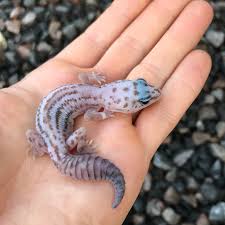GECKO PATTERNLESS ZULU (Hemitheconyx caudicinctus)
$300.00
Full Description
Here is a complete Patternless Zulu African Fat-Tailed Gecko (Hemitheconyx caudicinctus) care guide. This unique morph combines Zulu pattern traits (a recessive mutation affecting the dorsal pattern) with a patternless appearance, resulting in a smooth-toned, visually striking gecko.
Patternless Zulu African Fat-Tailed Gecko Care Guide
Morph Overview
| Trait | Description |
|---|---|
| Common Name | Patternless Zulu Fat-Tailed Gecko |
| Scientific Name | Hemitheconyx caudicinctus |
| Morph Type | Double recessive (Patternless × Zulu) |
| Experience Level | Beginner to Intermediate |
Size & Lifespan
| Feature | Range |
|---|---|
| Adult Size | 7–9 inches (18–23 cm) |
| Adult Weight | 45–75 grams |
| Lifespan | 15–20+ years |
Enclosure Requirements
Enclosure Size
| Gecko Stage | Recommended Tank Size |
|---|---|
| Juvenile | 10–15 gallons |
| Adult | 20-gallon long minimum |
Fat-tailed geckos are terrestrial, so floor space is more important than height.
Substrate Options
| ✅ Safe | ❌ Avoid |
|---|---|
| Paper towels (easy clean) | Loose sand |
| Reptile carpet | Wood chips or bark |
| Ceramic tile or slate | Soil with perlite |
| Bioactive (for advanced keepers) | Calcium-based substrates |
️ Temperature & Humidity
| Area | Temperature (°F) | Temperature (°C) |
|---|---|---|
| Warm Side | 88–92°F | 31–33°C |
| Cool Side | 75–80°F | 24–27°C |
| Nighttime | 70–75°F | 21–24°C |
| Humidity | 50–70% | Maintain with a humid hide |
Under-tank heater (UTH) + thermostat
Moist hide with sphagnum moss or moist paper towel
Digital thermometer/hygrometer for accuracy
Lighting
-
UVB optional but recommended (2–5% low-output UVB)
-
Use a 12-hour day/night cycle
-
Avoid bright lights—Zulu morphs can have sensitive eyes
️ Hides & Decor
| Type | Purpose |
|---|---|
| Warm Hide | Thermoregulation |
| Cool Hide | Comfort and security |
| Humid Hide | Assists in proper shedding |
| Enrichment | Cork bark, stones, fake plants |
Use low-profile décor—fat-tails don’t climb much.
Diet & Feeding
Feeder Insects
| Insect | Notes |
|---|---|
| Crickets | Great staple, stimulates hunting |
| Dubia roaches | Nutritious, ideal staple |
| Mealworms | Easy to dish-feed |
| BSFL | Naturally high in calcium |
| Waxworms/superworms | High fat, occasional treats |
Feeding Frequency
| Age | Schedule |
|---|---|
| Juvenile | Daily |
| Adult | Every 2–3 days |
Supplements
| Supplement | Frequency |
|---|---|
| Calcium (no D3) | Always in tank |
| Calcium + D3 | 1–2× weekly |
| Multivitamin | 1× weekly |
✅ Always gut-load insects 24–48 hours prior to feeding.
Cleaning & Maintenance
| Task | Frequency |
|---|---|
| Spot cleaning waste | Daily |
| Water refresh | Daily |
| Humid hide check | Every 2–3 days |
| Full clean | Monthly |
Morph-Specific Notes
| Trait | Description |
|---|---|
| Patternless | Lacks body banding and tail patterns |
| Zulu gene | Recessive morph affecting dorsal pigment; can create dark, solid, or uniform coloration |
| Health | No known health issues specific to morph |
| Lighting sensitivity | Zulu morphs may be more sensitive to bright lights |
Handling Tips
-
Wait 1–2 weeks before handling after moving to a new home
-
Keep sessions short at first (5–10 mins)
-
Never handle during shed or right after feeding
-
Always support the entire body; they may drop tails if stressed
✅ Quick Reference Chart
| Feature | Recommendation |
|---|---|
| Enclosure | 20-gallon long min. for adult |
| Substrate | Tile, paper towels, bioactive |
| Temperature | 88–92°F (warm), 75–80°F (cool) |
| Humidity | 50–70%, with a humid hide |
| Lighting | UVB optional (2–5%) |
| Diet | Insects + calcium & vitamins |
| Behavior | Calm, shy, crepuscular |

